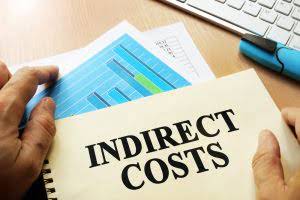
Static budgets can be inflexible in adapting to changes in activity levels, leading to potential inaccuracies in performance evaluation. They may not accurately reflect actual financial conditions, making it challenging to respond to unforeseen events. Static budgets are characterized by their fixed nature, meaning they do not change regardless of actual activity levels.
- An advanced flexible budget adjusts for changes in activity levels for all costs, including both fixed and variable costs.
- This analysis would compare the actual level of activity so volume variances are not a factor and management can focus on the cost variances only.
- Fixed costs remain constant regardless of activity level, while variable costs change in direct proportion to activity.
- A static budget stays locked at original projections regardless of what actually happens in your business.
- Notice how the variable costs change with volume but the fixed costs remain the same.
Preparation of Flexible Budgets:
In the example above, we showed that the restaurant does a simple adjustment based on the increase in customers, which directly affects revenue. As you can see, the flexible budget adjusts the expected food expenses based on a higher cost per customer, resulting in an extra $1,500 in the overall budget. This allows the restaurant to better manage its expenses and make informed decisions about future pricing and menu offerings, seizing the opportunity of the increase in customers to make a higher profit. A flexible budget is a budget that adjusts for changes Debt to Asset Ratio in the level of activity or output. This makes the budget more up to date and accurate by keeping in mind unpredictability as much as possible.

Mastering Financial Planning: Static vs. Flexible Budgets for Adapting to Activity Levels
Lobster Instant Noodles make instant ramen noodles in cups that are commonly eaten by university students across the world. Simply add boiling water, close the lid for 3 minutes and you’ve got an instant meal. The business had planned to sell 25,000 units in 2022 at a price of $6.50. There were direct variable costs for materials $0.80, labour $1.00, overhead $0.50 and selling and administration $0.50.
- The unexpected additions like flower, remote-controlled TV soon become very much expected by the customers from the hotel.
- To keep the example simple, we assume that thefirst four costs are strictly variable and we will calculate abudget per unit for these costs.
- A planning budget (or static budget) is set at the beginning of a period based on expected activity levels.
- The fixed costs are constant and remain same in both static and flexed budgets.
- It is the budget which would have been prepared at the beginning of the period, had the management known the exact actual output.
- As such, a flexible budget shows a much truer and more realistic picture of a company’s financial integrity for the period.
- Marketing costs might correlate with campaign cycles, while maintenance expenses follow equipment usage patterns rather than sales volume.
What is the difference between a Flexible Budget and a Static Budget?

For example, Larry’s Lawn Service might budget for mowing 500 lawns in June, estimating costs and revenues based on that planned activity. The flexible budget approach varies from the more common static budget, which contains nothing but fixed amounts that do not vary with actual revenue levels. This means that the variances will likely be smaller than under a static budget, and will also be highly actionable.
- There were direct variable costs for materials $0.80, labour $1.00, overhead $0.50 and selling and administration $0.50.
- The expenses that do not change are the fixed expenses, as shown in Figure 7.23.
- If production is higher than planned and has been increased to meet the increased sales, expenses will be over budget.
- These industries cannot rely on the conceptual model of a static budget.
- A group of products within the product family recognised as having a certain functional coherence.
- Examples from the retail industry show that static budgets can be advantageous during stable economic periods.
- Unlike a static budget, which remains constant regardless of these fluctuations, a flexible budget recalculates revenue and expenses based on the achieved level of activity.
For example, organizations are often reporting their sustainability efforts and may have some products that require more electricity than other products. The reporting of the energy per unit of output has sometimes been in error and ledger account can mislead management into making changes that may or may not help the company. For a company, static budgets, prepared ahead of time and prepared without access to certain critical events (and numbers), can present a false or misleading financial profile for that company. Customer interest, for example, may prove broader than anticipated, or a gamble on an online store might create an unexpected spike in sales, resulting in higher than expected income. A ski lodge can experience a warmer than usual winter, or a global conglomerate’s massive computer network can crash, resulting in smaller than projected revenues.

Static Budgets
One of the main advantages of static budgets is their simplicity and ease of preparation. Since the budget does not change, it allows for straightforward comparison of actual performance against the budgeted figures. However, this rigidity can be a limitation in dynamic environments where activity levels fluctuate significantly. The advantage to a flexible budget is a flexible budget may be prepared we can create a budget based on the ACTUAL level of production to give us a clearer picture of our results by comparing the flexible budget to actual results. This analysis would compare the actual level of activity so volume variances are not a factor and management can focus on the cost variances only.
- The value of such a budget then becomes entirely archival—a performance measure that really has little long-term operational relevance.
- See a demo to learn why more than 40,000 businesses, from small family farms to space startups, trust Ramp to improve their financial operations.
- Retailers can plan their inventory and staffing needs with greater certainty, reducing the risk of overstocking or understaffing.
- In the case of a typical business, if it is newly started, it becomes tough to predict the demand for the products/services accurately.
- Managers use a technique known as flexible budgeting to deal with budgetary adjustments.
Such budgets are prepared for those activities, the trend in which is difficult to foresee over longer periods. With flexible budget, it is possible to establish budgeted cost for any range of activity. Static budgets offer simplicity and ease of preparation, as well as consistency and stability in financial planning. They provide a clear and straightforward framework for managing finances. A Flexible Budget is a budget or financial plan that varies according to the company’s needs. They made it flexible because the specific company’s or department’s needs do not remain static.

Favorable (F) vs. Unfavorable (U) Variances
Combining elements of both static and flexible budgets can also be beneficial, providing a balanced approach to financial planning and control. A static budget is typically based on a fixed level of activity or output and does not change with changes in sales volume, production volume, or other measures of business activity. It is often created at the beginning of the budget period and is not adjusted as the period progresses. In the twenty-first century, with rapid and drastic fluctuations in the economy and changes to industry and consumer behavior, companies must be agile and able to account for a range of contingencies (Katz, 2016). Managerial expectations will be better adjusted once the period’s data is recalculated to include these impact-points.
Tinggalkan Balasan